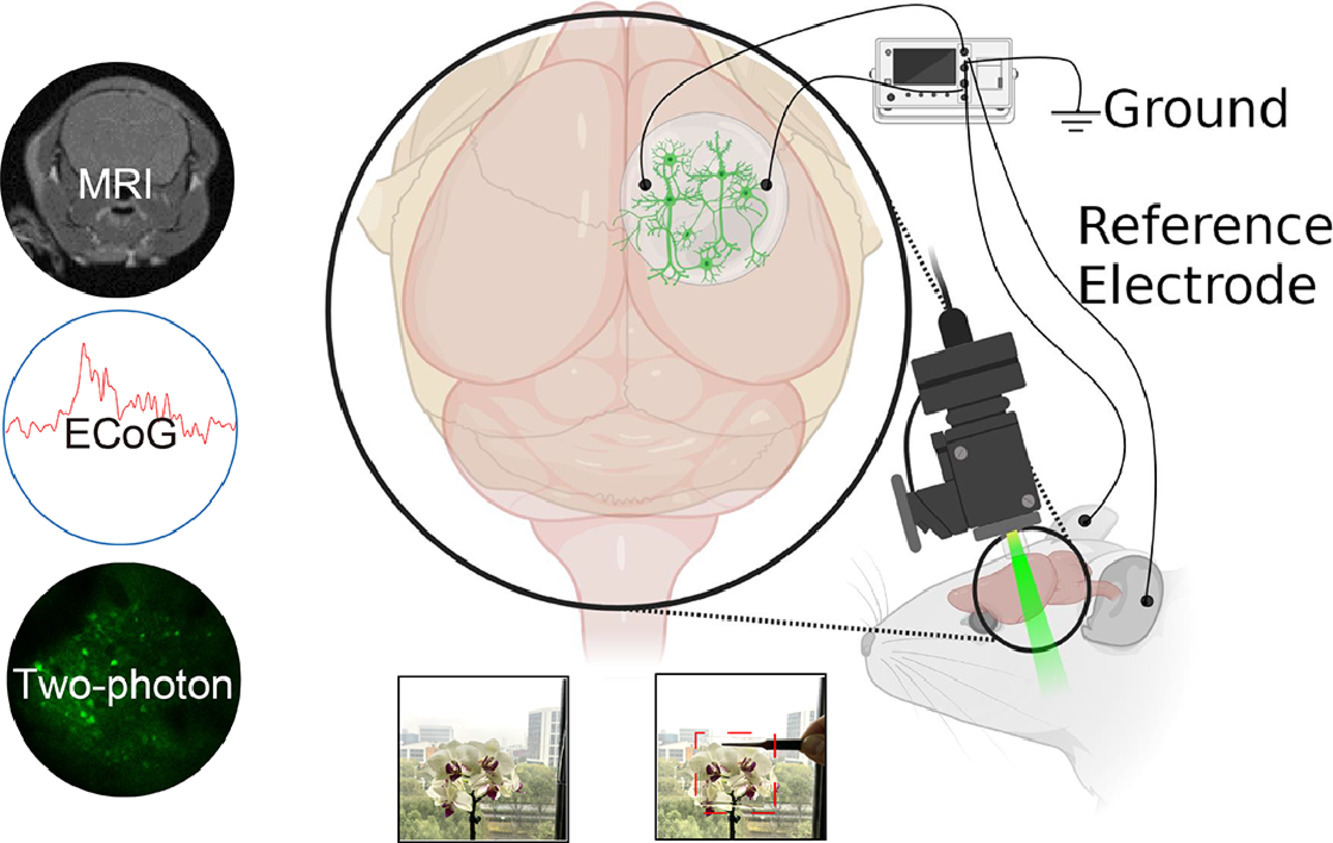文章专利

- 地址: 江苏省苏州市苏州工业园区若水路398号
- 邮箱: tzhang2009@sinano.ac.cn
- 电话: 86-512-62872706
- 传真: 0512-62603079
- 网址: http://nanosensor.sinano.ac.cn

In Situ Multimodal Transparent Electrophysiological Hydrogel for In Vivo Miniature Two-Photon Neuroimaging and Electrocorticogram Analysis, Acta Biomaterialia, 2022, doi.org/10.1016/j.actbio.2022.08.053.
Wei Wei#; Mingming Hao#; Kai Zhou; Yongfeng Wang; Qifeng Lu; Hui Zhang; Yue Wu; Ting Zhang*; Yaobo Liu*;
Abstract
Hydrogels are widely used in nerve tissue repair and show good histocompatibility. There remain, however, challenges with hydrogels for applications related to neural signal recording, which requires a tissue-like biomechanical property, high optical transmission, and low impedance. Here, we describe a transparent hydrogel that is highly biocompatible and has a low Young's modulus (0.15 MPa). Additionally, it functions well as an implantable electrode, as it conformably adheres to brain tissue, results in minimal inflammation and has a low impedance of 150 Ω at 1 kHz. Its high transmittance, corresponding to 93.35% at a wavelength of 300 nm to 1100 nm, supports its application in two-photon imaging. Consistent with these properties, this flexible multimodal transparent electrophysiological hydrogel (MTEHy) electrode was able to record neuronal Ca2+ activity using miniature two-photon microscopy. It also used to monitor electrocorticogram (ECoG) activity in real time in freely moving mice. Moreover, its compatibility with magnetic resonance imaging (MRI), indicates that MTEHy is a new tool for studying activity in the cerebral cortex.

Full Paper: https://www.sciencedirect.com/science/article/pii/S1742706122005256?via%3Dihub
